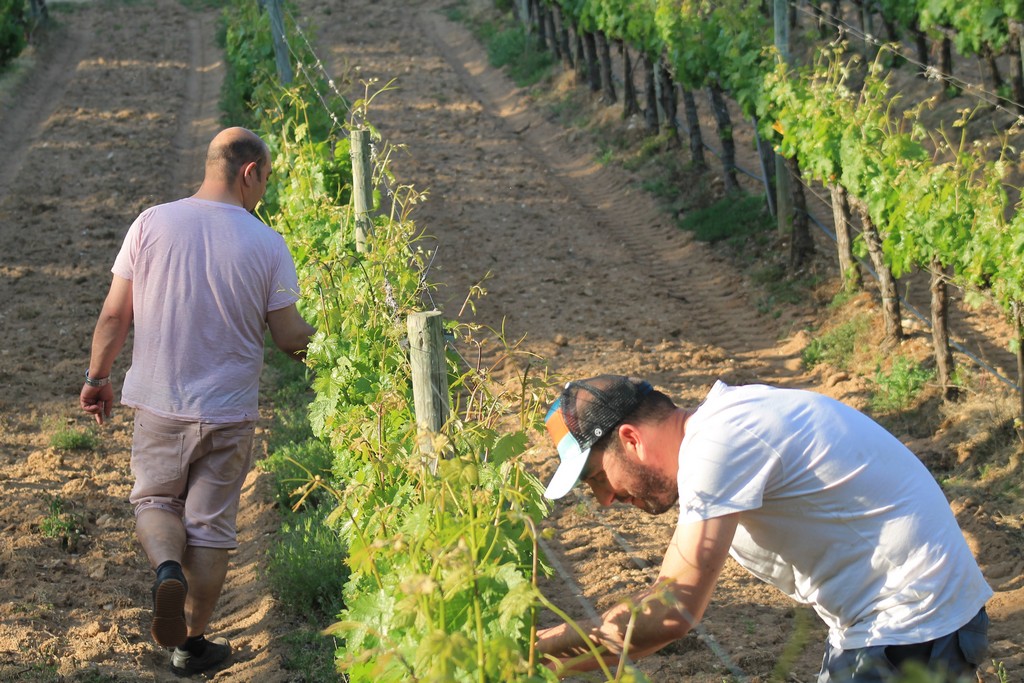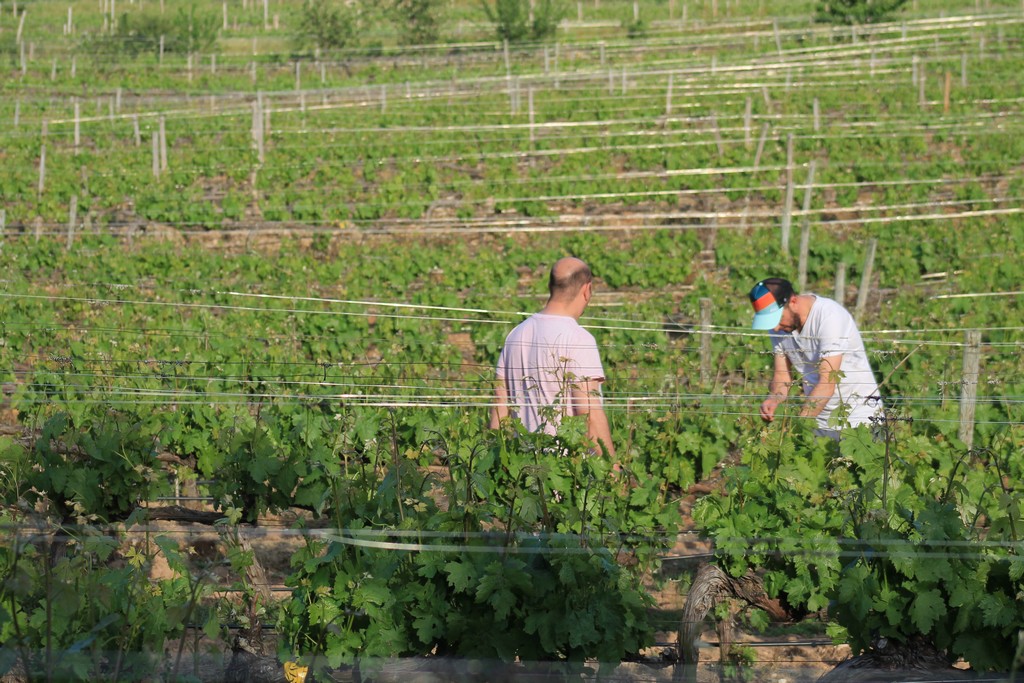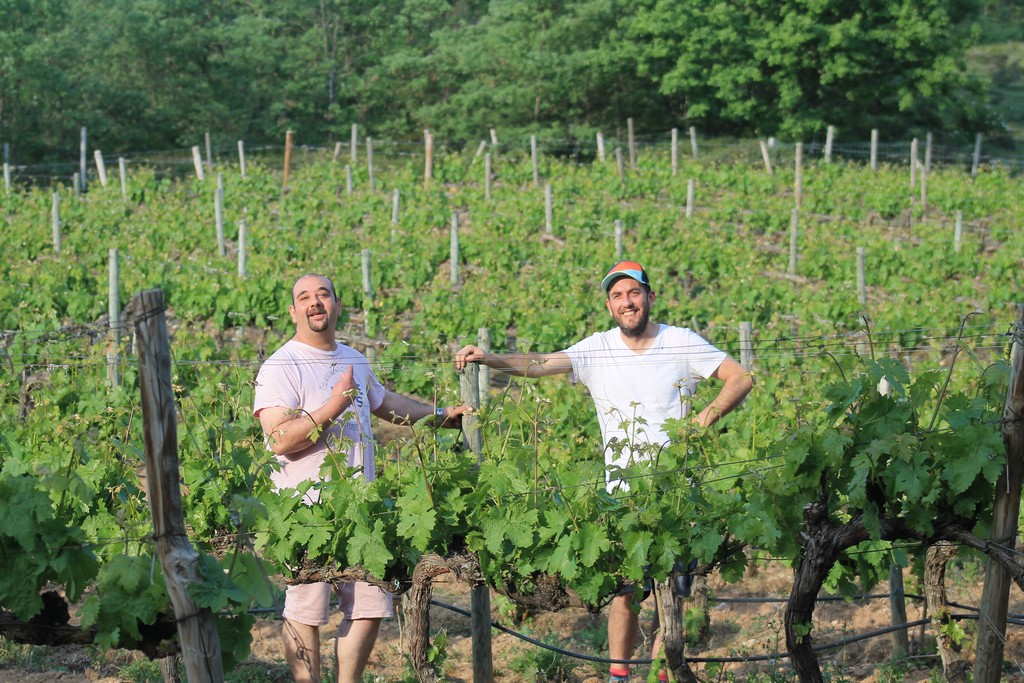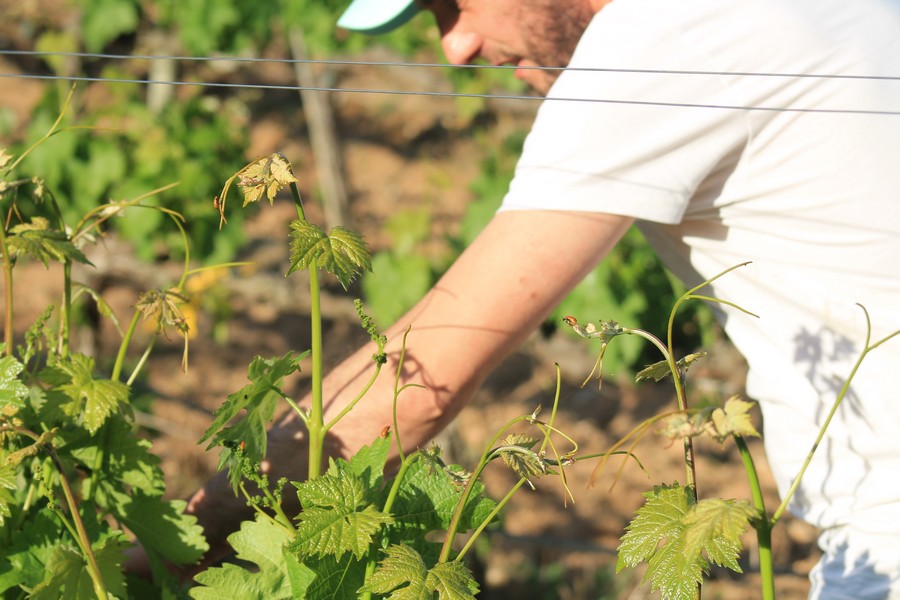In 2002…
The Lucio family learns from a press release that the Government of Cantabria is interested in promoting the production of their own wines. They registered as an experimental estate, with a cultivation of 6,000 m2 of 5 varieties: Tempranillo, Garnacha, Cavernet sauvignon, Mencía and Prieto picudo.
In 2002…
The Lucio family learns from a press release that the Government of Cantabria is interested in promoting the production of their own wines. They registered as an experimental estate, with a cultivation of 6,000 m2 of 5 varieties: Tempranillo, Garnacha, Cavernet sauvignon, Mencía and Prieto picudo.
In 2007…
Once the experimental process was completed, and with the advice of an oenologist from La Rioja, they decided to use the Tempranillo variety and began to market the Camesía wine harvester. The vineyard is increased to 1.5 ha.

In 2012…
Industrial activity begins as farmers in the Government of Cantabria. The business is consolidated with the construction of the first warehouse and the cultivation of 5 hectares (minimum profitable vineyard area).
In 2016…
They buy American oak barrels to start the first ageing tests: 14 months in barrel + 14 months in bottle.
In 2017…
A new cultivation of 4,000 m2 of white grapes of the Godello and Viognier varieties begins.
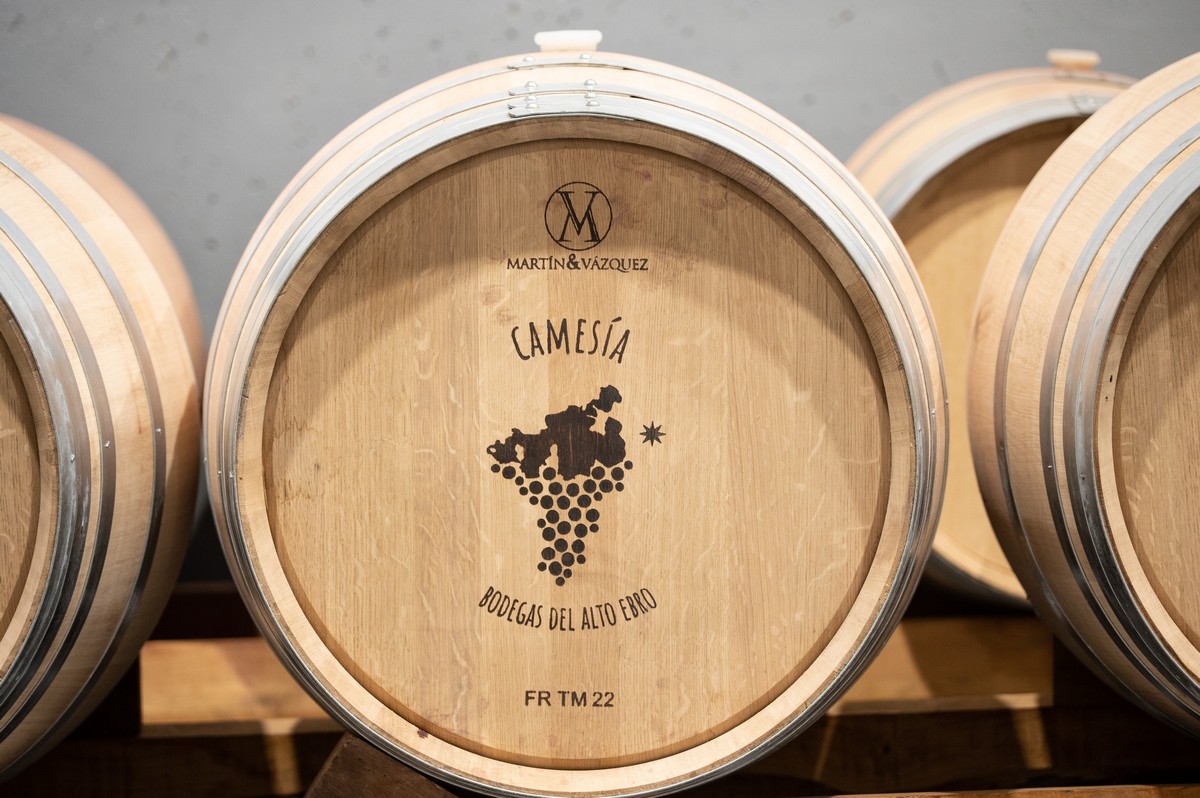
In 2019…
The first limited production of 2,500 bottles of El Hito Crianza red wine is released.

2024
Opening of BODEGAS CAMESÍA DEL ALTO EBRO!
THE ORIGIN OF WINE LINKED TO THE FIRST ROMANS…
There are several indications that suggest the existence of vineyards in Valderredible since ancient times, but one of the least open to interpretation is the toponymy of places such as Cuesta las Viñas, Viñacueto, Las viñas, La Viñuela, La Viñeda, etc.
Could it be the Romans who lived in the Villa de Santa María de Hito who brought this crop to our lands? It is there that the first and last rays of sunlight shine.
Even so, the exact origin of this crop is something we may never know.
THE WINEMAKING TRADITION IN VALDERREDIBLE BEGAN IN THE MIDDLE AGES.
In the early Middle Ages, vine cultivation was an important value in the Campurria region, proof of which is that the Collegiate Church of San Martín de Elines has a Codex from the 15th century which mentions the presence of vineyards in the municipality. The manuscript tells how the farmers used the bad grapes to pay tithes to the old monastery, keeping the good ones for themselves.
EXISTENCE OF VINEYARDS IN VALDERREDIBLE…
– 14th century: Libro de miseria de omne. Remigio Garmendia (clerical tailor and amateur antiquarian) acquires this codex in Valderredible.
Among many other things, it speaks of the abundance of vineyards in these lands during the Middle Ages:
El señor en este comedio por las viñas va
caçar
Anda valles y oteros caza non puede
trobar
During the 1870s, the main wine-growing areas of Spain were infected with phylloxera, a disease that attacked the roots, drying out the grapes.
SO VII CENTURIES LATER…
Poem by Ignacio Merino “El Chigri”.
BERNARDO LUCIO, A CAMPURRIANO WHO HAS REVIVED THE WINEMAKING TRADITION IN VALDERREDIBLE…
What we do know is that thanks to the entrepreneurial vision that Bernardo Lucio has always shown and that he has passed on to his children, this family has now been working for years so that, step by step, viticulture is opening up a niche among the other crops in the Valley.
Valderredible is a municipality very suitable for planting vines...
Sun and humidity. The more water there is in the environment, the more diseases will appear. The municipality of Campania has a dry climate, so it is not necessary to apply so many chemical products to the fruit. Furthermore, this land has very chalky and sandy soils, abandoned mountain areas suitable for vine cultivation.
DO YOU FOLLOW US ON SOCIAL MEDIA?



